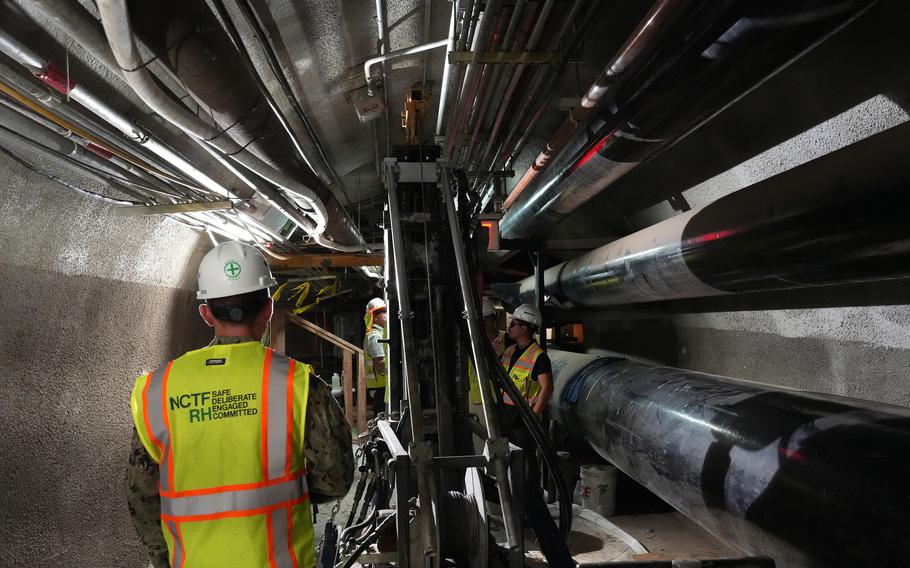
Members of Navy Closure Task Force-Red Hill inspect a drilling rig at the Red Hill Bulk Fuel Storage Facility in Honolulu, Hawaii, Oct. 31, 2024. (Glenn Slaughter/U.S. Navy)
HONOLULU, Hawaii — The Legislature has established a position for a Red Hill cleanup “czar” who will coordinate state policy regarding contamination left by the Red Hill Bulk Fuel Storage Facility over its 80-year lifespan near Pearl Harbor.
In the years ahead, that individual will coordinate the state’s role in environmental remediation across local, state and federal agencies.
The legislation also created a special fund to address contaminated soil and groundwater.
The legislation garnered broad support.
“It is important that we look at establishing government structures that can help to oversee remediation in the long term as this effort can extend well into the future,” Ernie Lau, chief engineer for the Oahu Board of Water Supply, said in written testimony submitted to the legislature in February.
“This bill also establishes a special fund to be administered by the [coordinator] and be able to receive federal funds, appropriations by the Legislature, or gifts, donations, grants from public agencies and private persons,” he wrote.
The Red Hill facility, built in secrecy during World War II, was ordered permanently closed by then-Defense Secretary Lloyd Austin in March 2022 in the wake of a jet fuel spill in late 2021 that contaminated the Navy’s water distribution system used at Joint Base Pearl Harbor-Hickam and surrounding military housing communities.
Navy Closure Task Force-Red Hill is in the process of cleaning the facility’s 20 steel-lined tanks, each of which could hold about 12.5 million gallons of fuel. The task force is also charged with cleaning up pollutants in the environment.
The extent of contamination lying beneath the facility, how long it will take to deal with it and what it will cost remain unknown.
Congress has appropriated just over $2.1 billion to decommission the facility and begin the lengthy cleanup.
The Defense Department, however, has not adequately informed Congress of what it will cost to fully clean the soil and groundwater around the tanks, according to a 2024 report by the Government Accountability Office.
“DOD had not, as of the end of fiscal year 2023, communicated information to Congress about total fiscal exposures for anticipated Red Hill remediation activities for fiscal years 2025 and beyond,” the report said.
The Red Hill Water Alliance Initiative, a working group of state, county and city of Honolulu officials, estimated in a November 2023 report that as much as 2 million gallons of fuel may have leaked and spilled into the ground beneath the facility during the past eight decades.
The newly established position of policy coordinator — housed within the Hawaii Department of Land and Natural Resources – will manage initiatives outlined in the water alliance’s report.
That report prioritized the remediation strategy in two parts: a systematic review of new technologies and methods applicable for Red Hill and bringing to scale methods for accelerating the natural process of biodegradation of petroleum in the ground or water table.
In biodegradation, micro-organisms break down organic materials into simpler and benign substances such as water or carbon dioxide.